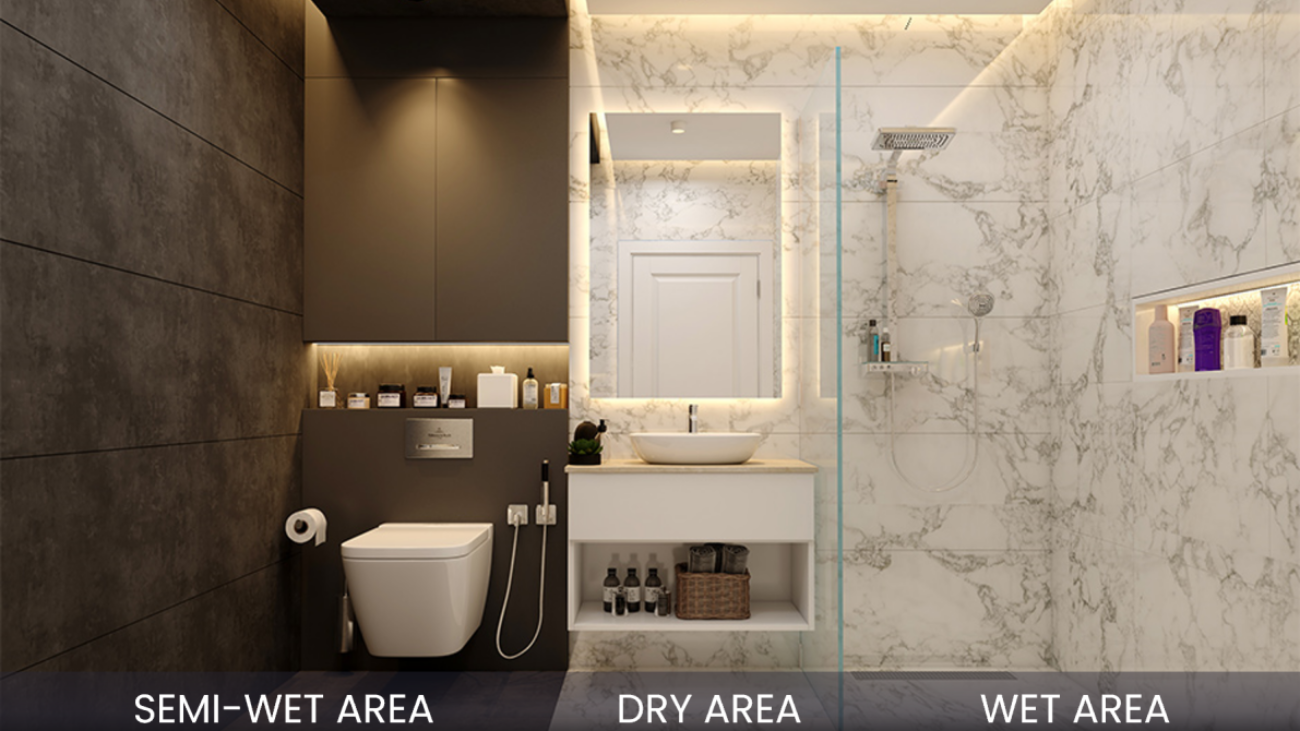The Dichotomy of Bathroom Designs
Architects and designers or not, we all know the importance of a well-designed and maintained bathroom. It’s literally the first place you visit in the morning and the last one before you hit the bed. So let’s talk bathroom basics. Separating wet and dry zones is like drawing a line (literally) between a swimming pool and a desert. Without it, you’re basically setting up a circus show where slipping and sliding are the main attractions. Imagine taking one step and ending up on your backside! Plus, ignoring this divide means inviting all sorts of gross things to party in the wrong areas. So, let’s keep it simple: wet stays wet, dry stays dry, and we all avoid turning our bathroom into slapstick comedy. Safety first, laughs second!
Key Considerations for Crafting the Perfect Residential Bathroom
Before diving right into Dry Zones V/S Wet zones, let us look at some crucial factors in designing a residential bathroom which will help us appreciate bathroom designs better:
1. Layout & Space Planning:
Optimise space for not just comfort and functionality, ensuring efficient movement and utilisation of fixtures but also for aesthetics and privacy.
2. Fixtures and Appliances:
Choose fixtures and appliances that blend utility with aesthetic appeal, enhancing the overall look and usability of the space.
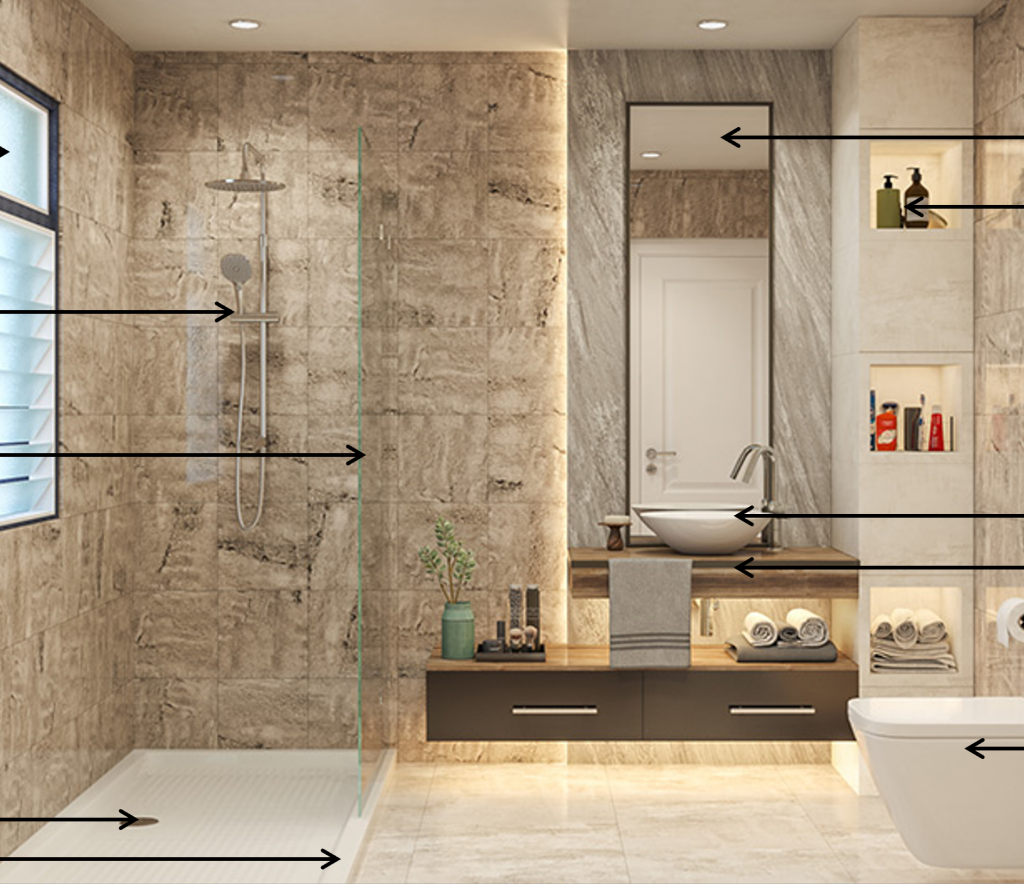
3. Lighting & Ventilation:
Incorporate adequate natural lighting and ventilation to create a comfortable atmosphere while combating moisture and odours via tinted windows, ventilation fans, indoor plants, louvred doors, and reflective surfaces.
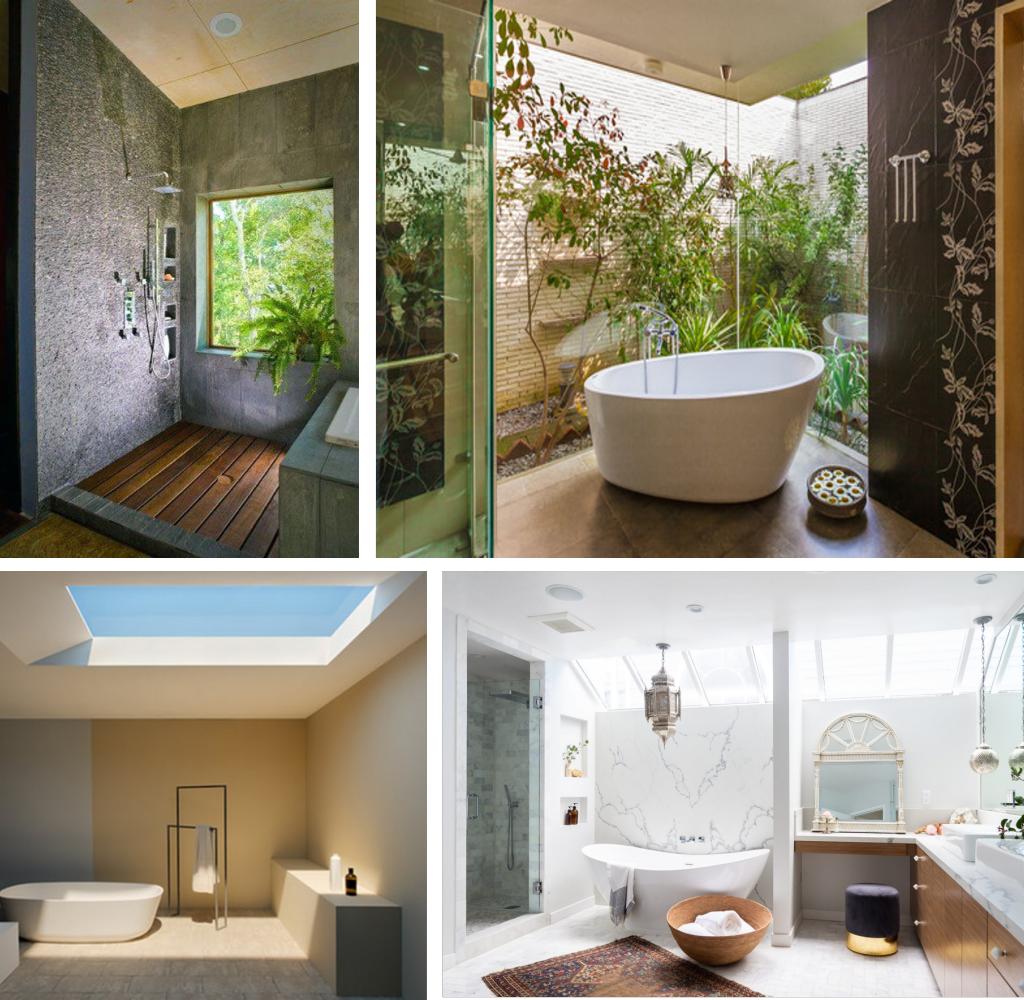
For artificial lighting, opt for
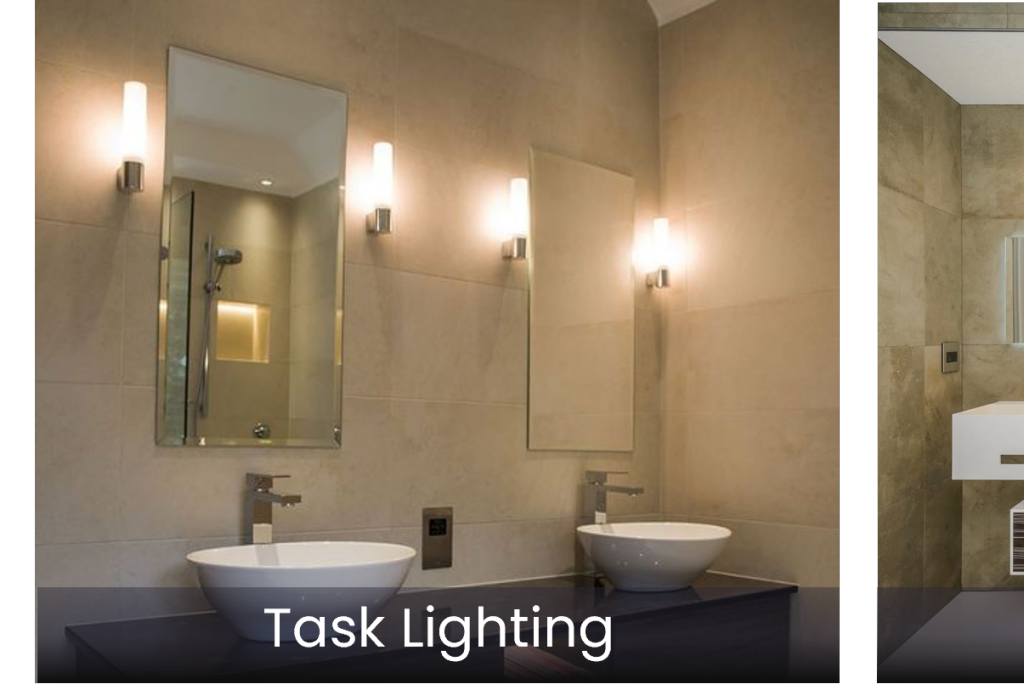
strategically placed for optimal functionality.
4. Durable Materials:
Select materials that withstand frequent use and maintain their quality over time, ensuring longevity and easy maintenance.
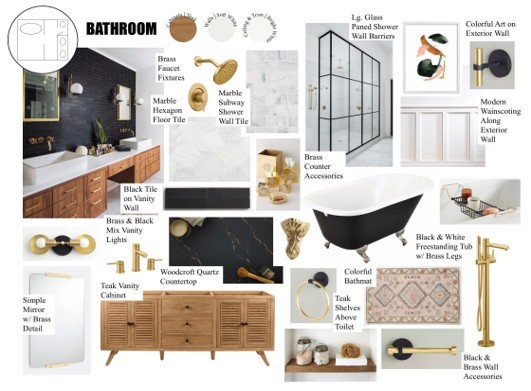
5. Accessibility Features:
Integrate features such as grab bars and accessible fixtures to accommodate individuals with diverse needs, promoting inclusivity within the household.
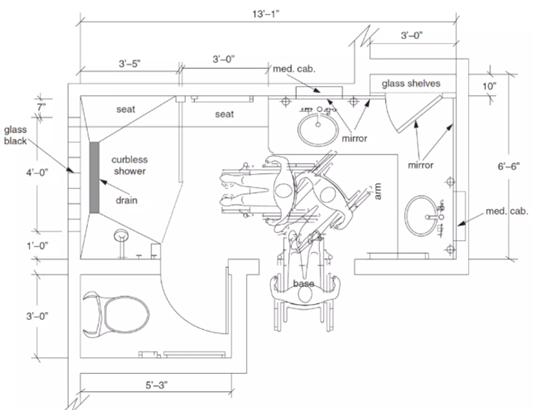
Services:
It is extremely important to pay attention to plumbing and electrical systems and ensure seamless operation and functionality, completing the blueprint for a well-rounded restroom sanctuary.
Understanding the Functional Divide: Wet Zone vs. Dry Zone
Addressing the elephant in the room-
The wet zone is where the aquatic action happens. It includes showers and bathtubs, along with a towel rack for convenience. It is designed to be waterproof and easy to drain, so you don’t have to worry about water splashing everywhere.
The dry zone is where you spend most of your bathroom time. It includes toilets, sinks, mirrors, cabinets and other furniture and appliances. It is designed to stay dry and comfortable, so you don’t have to deal with moisture and bacteria buildup.
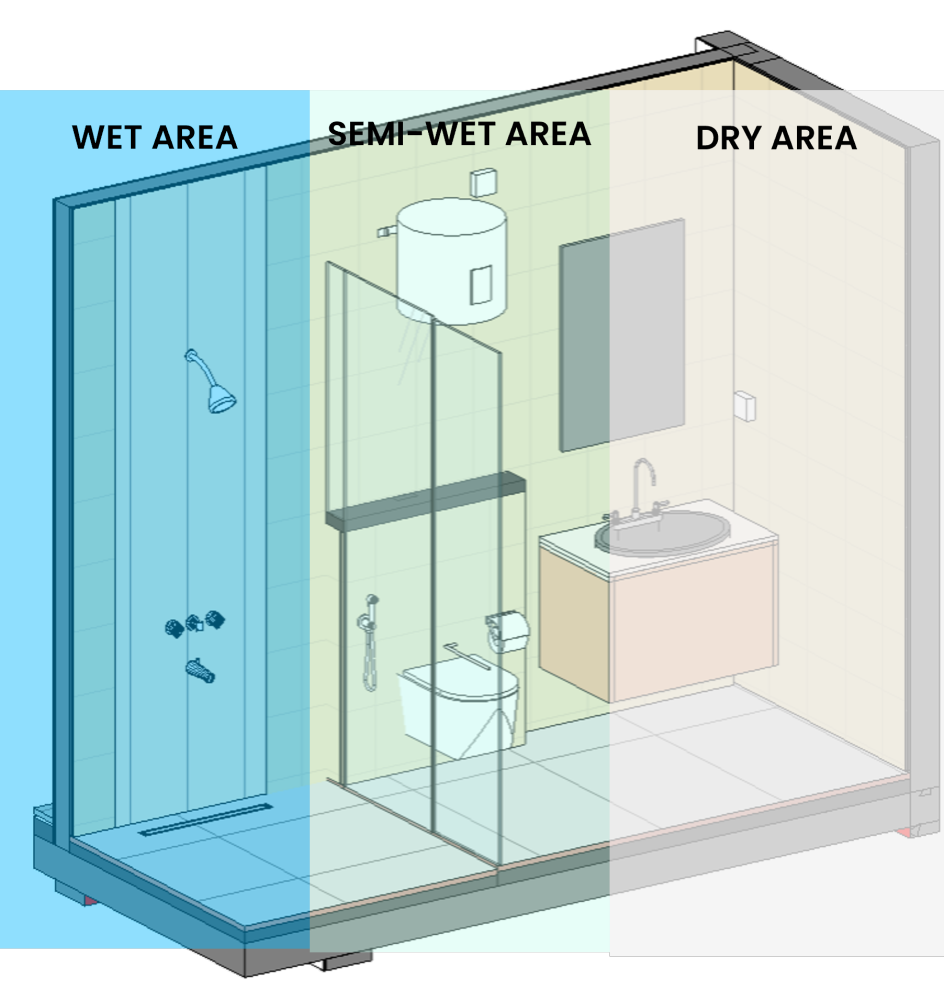
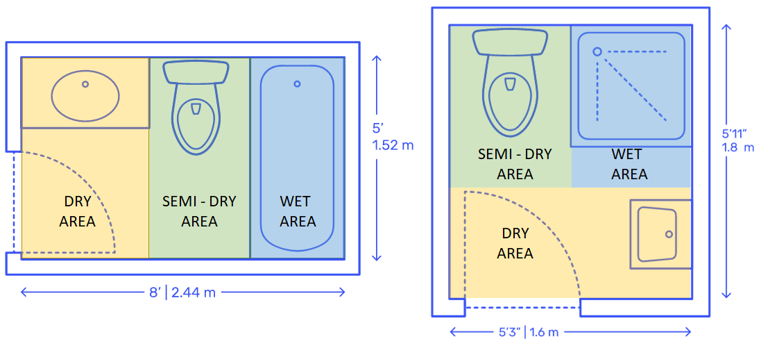
Advantages of Splitting Wet and Dry Zones
Hygiene Boost: Keeping wet and dry areas apart prevents water from mingling with dry surfaces, cutting slip and mould risks.
Tidy Territory: Dry zones like counters stay clean and comfy sans water, making them a breeze to use.
Style Upgrade: A smart division can jazz up your bathroom’s look, adding visual charm and order.
Enhanced Utility: Division amps up usability, letting you tackle bathroom tasks without bumping into wet spots.

Disadvantages of Separate Zones
Space Squeeze: Splitting areas might demand extra room, a headache in compact bathrooms, leaving less space for essentials.
Price Hike: Building separate zones can pinch the pocket due to added waterproofing and drainage needs.
Access Hurdles: It could pose challenges for folks with disabilities, complicating movement between wet and dry spots.
Functionality Fumbles: Sometimes, dividing zones disrupts flow, forcing users to shuffle between areas more than desired.
Zone Your Bathroom Smartly
In a spacious bathroom, a partition wall can segregate zones. However, ensure it doesn’t cramp space or block light. If full-length isn’t feasible, opt for a half-wall or glass top to maintain light flow. In compact bathrooms, consider enclosed showers or frameless glass partitions for brightness. For flair, experiment with split-level floors, delineating zones with style and maximising chic.
BONUS TIPS
- Position the wet zone away from the entrance to minimise water spread throughout the house.
- Place towel rails conveniently close to the shower for a pristine dry zone and an aesthetically pleasing bathroom.
- Carefully position shower taps to prevent unintentional spraying; consider placing them away from the shower head or on a facing wall.
- Integrate practical seating, serving as storage and a zone divider, especially with bench-style seating.
- Ensure heating for comfort; options include heated towel rails, wall-art heaters, or underfloor heating for a luxurious touch.
Technological Advancements in Bathrooms
As we navigate the nuances of designing bathrooms with distinct wet and dry zones, it’s fascinating to envision the future of restroom technology. The BIM Śāstra Bridge Workshop on Wet and Dry Area in Rest Rooms in Residential Space through BIM by bimgrafX Academy highlights the integration of BIM for optimising residential restroom spaces. Technological advancements promise smart restrooms with heated seats, bidets, and health sensors. Automated temperature and lighting control, self-cleaning surfaces, water-conserving technologies, and voice-activated controls are on the horizon.
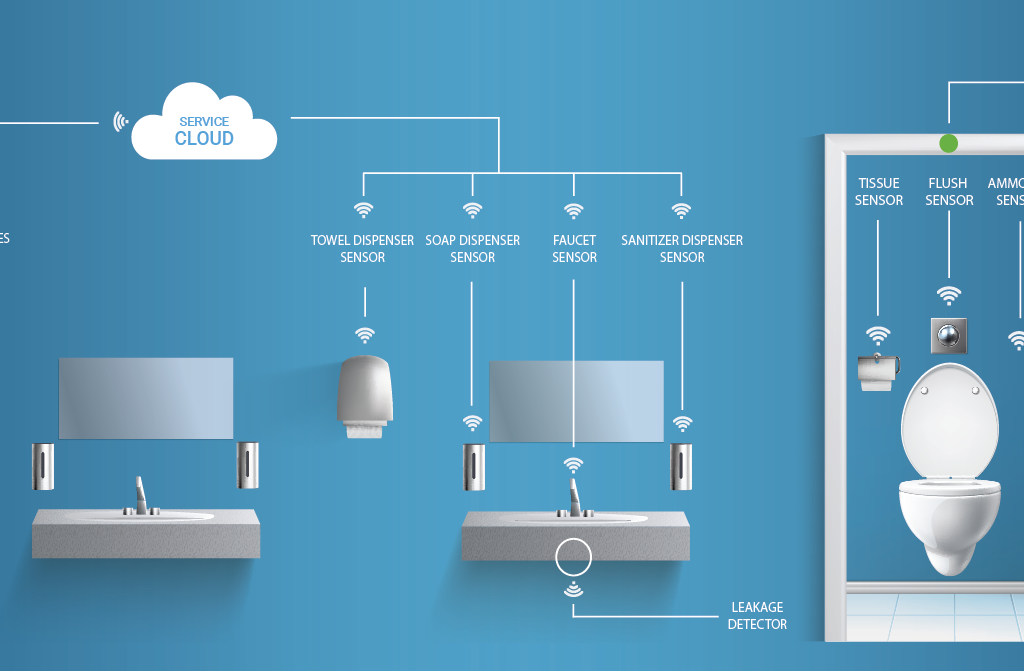
As we conclude our exploration of wet and dry zones in bathroom design, let’s ponder: Where else in our homes do we encounter a similar concept of segregation? Think about a space where culinary magic happens, where water flows freely, and dry ingredients find their place. Stay tuned for future blog posts. We will reveal the answer soon!
